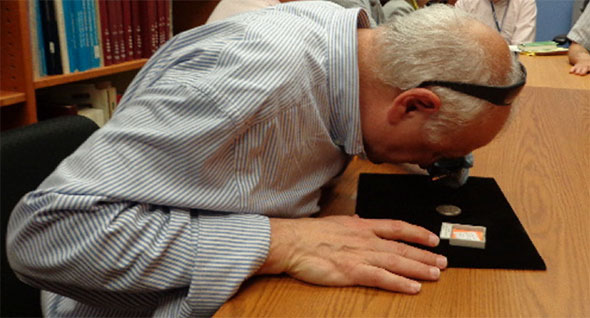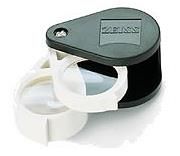
CoinWeek Ancient Coin Series by Mike Markowitz …..
THE HIGHEST PRAISE THAT one ancient coin collector can give another is to say he or she “has an eye for coins.” Someone with this remarkable ability can look at a tray of a hundred nearly identical pieces and unerringly pick out the three or four best examples.
In his book Outliers: The Story of Success (2011), Malcolm Gladwell argues that it takes ten thousand hours to achieve mastery in any field of endeavor. So, you want to be a classical numismatist? Better start right now!
But where to begin?
Invest in Yourself
As far as I know, no American college or university offers a degree in Numismatics[1] (the study of coins), but that doesn’t mean there is no place to learn. The American Numismatic Association (ANA)[2] in Colorado Springs offers summer seminars for aspiring classical numismatists, and the American Numismatic Society (ANS)[3] in New York City has a summer program that provides graduate students and junior faculty with rigorous training in numismatic research. Ancient coin clubs–notably in Los Angeles, Chicago, and Washington, DC–provide many opportunities to share the experience of experts. National and local coin shows, despite the pressure of crowds and time, can be great places to learn.
The inscriptions on ancient coins are (mostly) in Latin and Greek, but modern German, French and Italian are the languages of numismatic literature. Even for those of us without fluency, a little study and a good dictionary help to make this literature accessible.

Most collectors of ancients start out as collectors of American or world coins, discovering the allure of antiquity after years of collecting experience. Others begin with an interest in the ancient world and find that coins are real artifacts of that world that you can actually touch. A fortunate few with deep pockets begin as investors, captivated by the excitement of the auction room and the thrill of the chase.
Some know immediately exactly what they want to collect; others find their particular niche after years of exploration. The right answer is: whatever brings you delight. If you’re not enjoying your coins, you’re doing it wrong.
Buy the Book Before You Buy the Coin
Experienced collectors often seem to spend almost as much on books as they spend on coins.
In the vast literature of classical numismatics, an excellent starting point is the series of beginner’s guides by Wayne Sayles, particularly the first volume, Ancient Coin Collecting (Krause, 2003).

For many collectors, David Sear’s handbooks are an indispensible early acquisition. Roman Coins and Their Values, which began as a single volume in the late 1960s, has now grown into a five-volume set. Similarly, Greek Coins and Their Values, first published in 1959, is a two-volume set, with a third book on Greek coinage under the Roman Empire.
The first coin book I ever bought was the title Collecting Roman Coins by Kiely and Van Meter (1989), an accidental find in a secondhand bookshop. Twenty years later, I keep running out of shelf space–and not just for the books but also for the dealer catalogs that provide such valuable references. You’ll learn a lot from the books, but you may well learn even more from the catalogs. Books give you the historical context of the coins, but sale catalogs, especially when accompanied by the listing of “prices realized,” let you understand trends in the ancient numismatic market.
Buy the Best You Can Afford
“I have the simplest tastes. I am always satisfied with the best.”
—Oscar Wilde (1854-1900)
Beginning collectors are often tempted to acquire a large number of inexpensive coins. This is a good temptation to resist. Some of the best advice I ever got was “buy fewer, better coins.” Buying a coin is never an emergency. Try to relax and enjoy the process. I prefer to buy ancient coins at coin shows, where I know many of the dealers, having done repeat business with them for several years. Although I have acquired some wonderful pieces bidding in online auctions, one should not become frustrated or disappointed when your best bid for a desirable coin is “sniped” at the last minute by a collector with deeper pockets and quicker fingers.
Unlike collectible American coins, which are mostly encapsulated and trade in a relatively liquid market, ancient coins can be hard to sell, particularly common types in lower grades. There will always be a strong demand for great rarities in exceptional condition, of course, but these are likely to be well beyond the reach of most collectors.
Remember that the bitterness of low quality remains, long after the sweetness of low cost is forgotten.
Invest in Good Tools
The basic tool kit for a beginning numismatist is simple, compact and inexpensive.
You need a good magnifying lens.
Many professionals use the Bausch & Lomb Packette[4], a 5x lens that slides into a black plastic case[5]. Since the attribution (or formal description) of an ancient coin should always include the exact weight in grams (and incorrect weight is often a strong indication of a fake) you want a digital electronic scale accurate to 0.01 gram. These used to be pricey, but can now be purchased at coin shows or found online for under US$10. Some collectors like to use precision calipers to measure the diameter of a coin in millimeters (this is also part of a complete attribution.) You can spend a lot on a digital electronic caliper, but perfectly good plastic “vernier” calipers can be found online for as little as US$2. I just use a transparent ruler marked in millimeters to measure my coins.
 What about equipment for cleaning coins? The answer is easy – Don’t!
What about equipment for cleaning coins? The answer is easy – Don’t!
Beginners should generally not clean ancient coins. The risk of damage is too great and the probability of a good outcome too low. Collectors of modern coins understand that cleaning is a task for experts, but I know many ancients collectors will take issue with this, and argue that this or that “foolproof” formula is safe.
Let’s agree that cleaning is a subject best left for the advanced collector.
When it comes to photographing coins, the required equipment is bulkier, harder to use and probably more expensive. This is a subject for another day and, hopefully, another article. I’m slowly learning to photograph coins with a cell phone camera, a small tripod, and a remote shutter release, but I need to learn a lot more about lighting to produce good results. Mark Goodman’s book, Numismatic Photography, 2nd edition (2009) is a useful introduction to the subject.
“I Need Your Help”
The four most powerful words in the English language can be “I need your help”. Numismatists can be incredibly patient and generous in sharing their knowledge and resources but if you never ask, you won’t find out.
* * *
Notes
[1] Professional classical numismatists often have degrees in Classics, History, Art History, or Archaeology.
[2] https://www.money.org/school-of-numismatics
[3] http://numismatics.org/Seminar/Seminar
[4] List price is US$11.60; the lowest price I found online was $7.17.
[5] Tip: If you tape your initials on the case it won’t get mixed up with the identical magnifiers of other collectors when you set it down on a busy dealer’s table.
References
Gladwell, Malcolm. Outliers: The Story of Success. New York (2011)
Goodman, Mark. Numismatic Photography, 2nd ed. Zyrus (2009)
Kiely, Michael and David Van Meter. Collecting Roman Coins. Laurion (1989)
McNall, Bruce. Fun While It Lasted: My Rise and Fall in the Land of Fame and Fortune. New York (2003)
Sayles, Wayne. Ancient Coin Collecting, Vol. 1. Krause (2003)
Sear David. R., Greek Coins and their values, Vol. 1 and 2. Seaby (1978/79)
—-, Greek Imperial Coins and their values. Spink (1982)
—-, Roman Coins and their values, Vol. 1-5. Spink (2000-2013)
—-, Byzantine Coins and their values. Seaby (1987)




